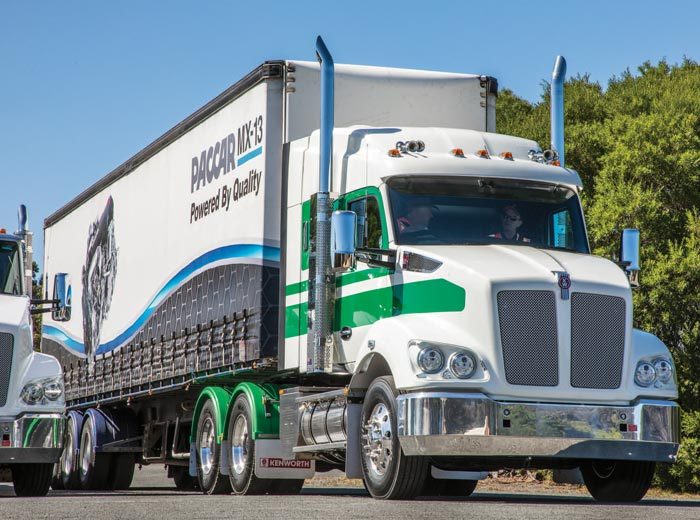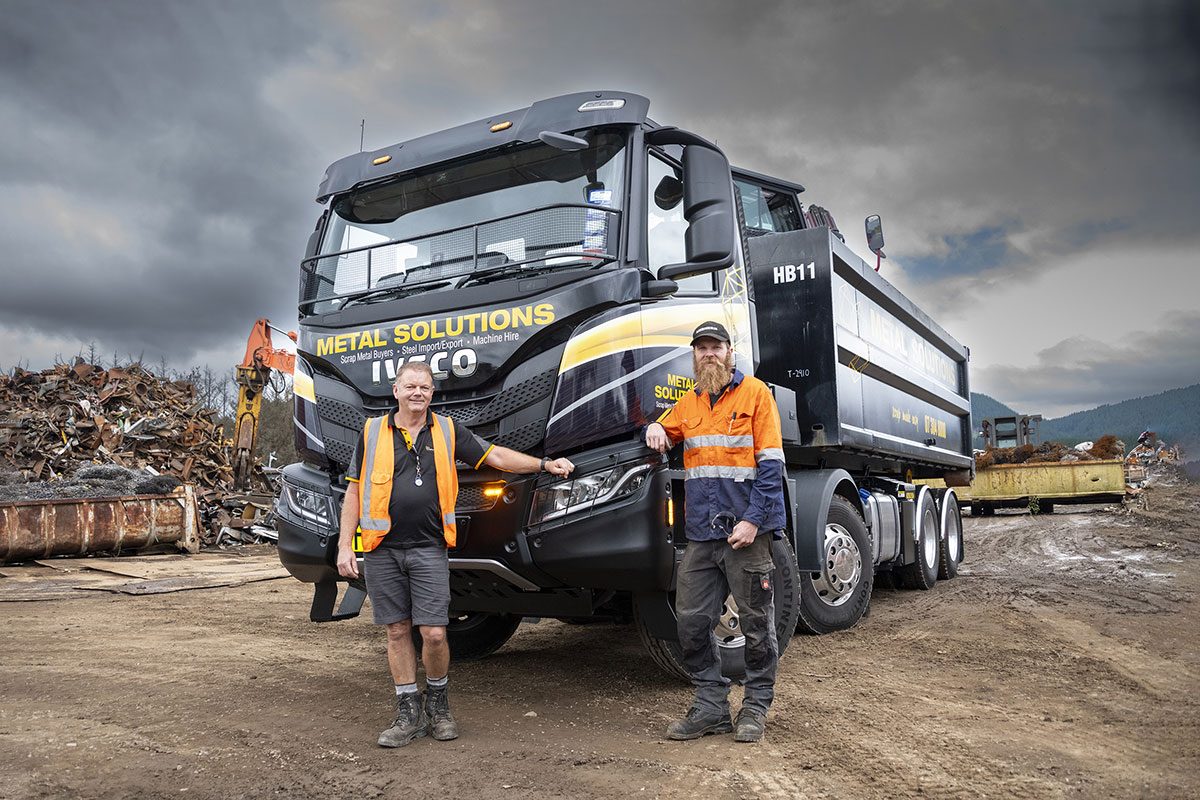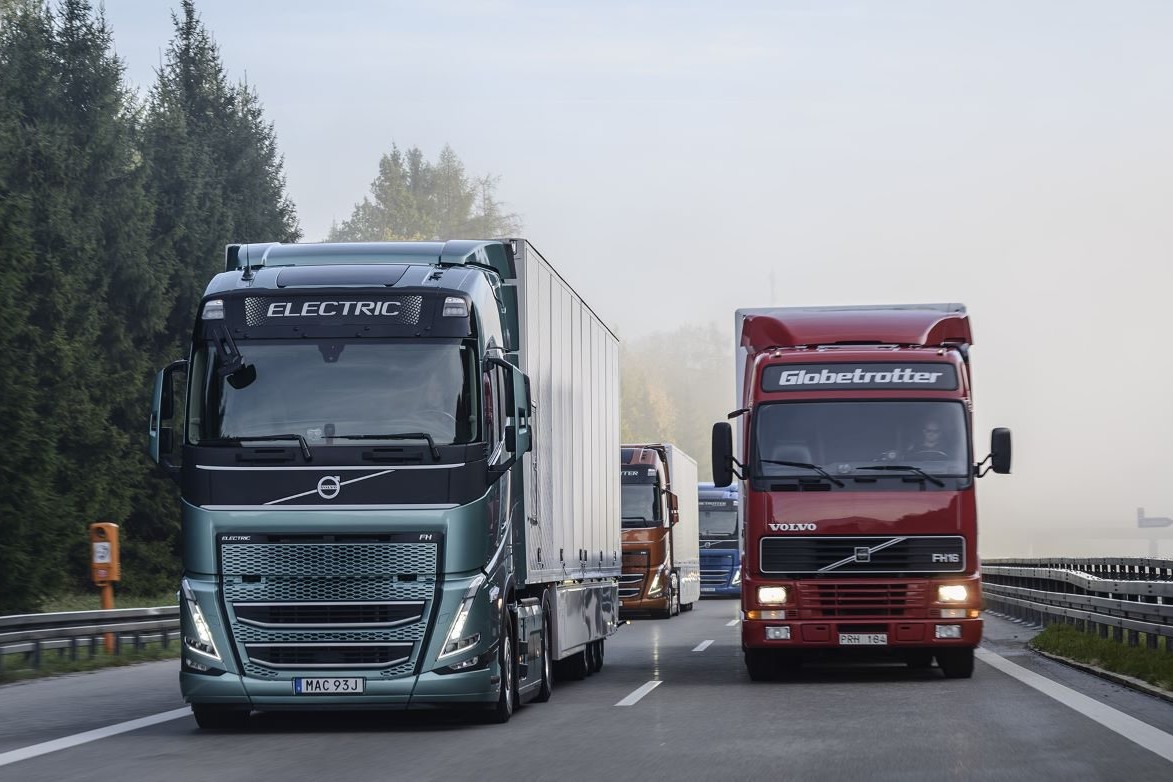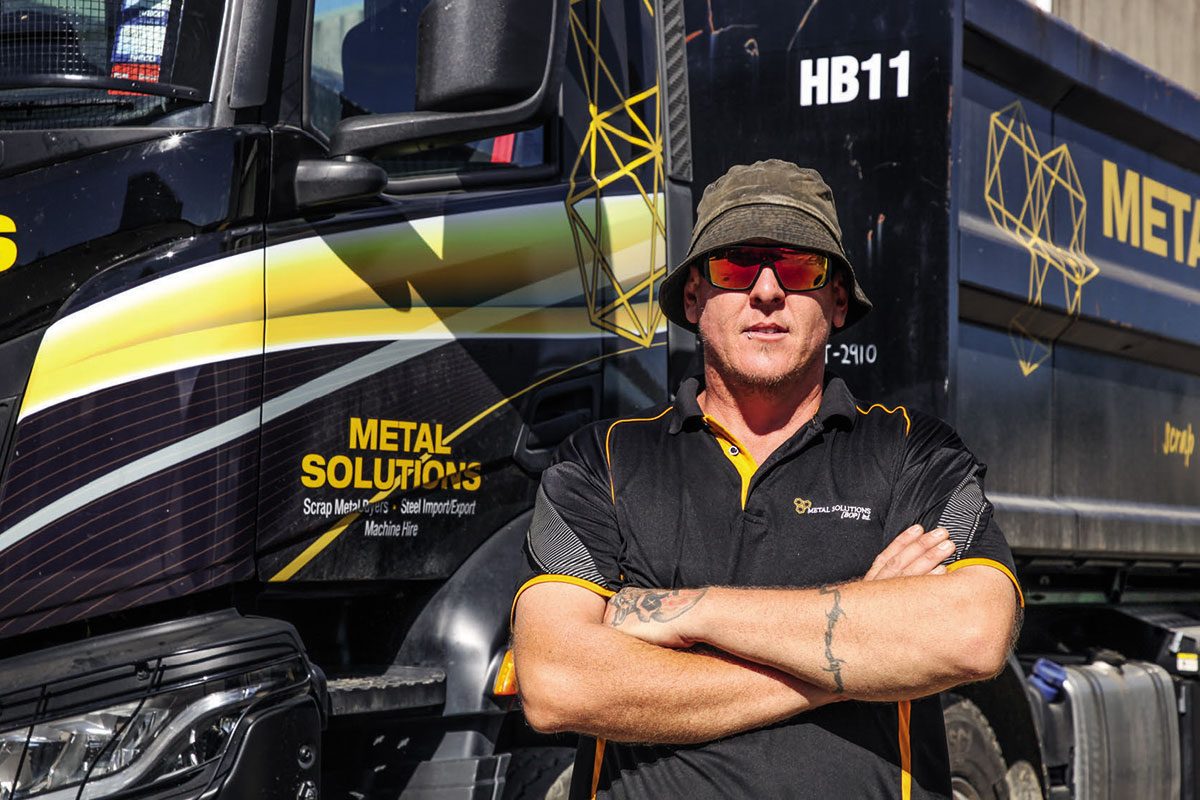Kenworth made its intentions for model rationalisation clear with the arrival of the T610. Two years on from the truck‘s New Zealand launch, the latest newcomers to wear PACCAR‘s famous brand name bring those plans a step closer, and hint at a whole lot more.

It‘s a tough time in history for the likes of Kenworth, Mack, Freightliner, and Western Star. Trucks whose reputation was built on strength, durability, and mechanical simplicity, have faced the real need to reinvent themselves for the modern world, accommodating the technology – and therefore complexity – that facilitates modern emissions, fuel burn, and safety expectations. And it doesn‘t stop there. With truck drivers the world over increasingly worried more about angina than they are about ambition, occupant care and comfort are now stratospherically high on the shopping lists of most transport entities; again, traits not historically the strengths of the big Yank machines.
Today thankfully, the old toilers all have big parents to take the rough edges off, and put them through finishing school. Kenworth‘s been marching at a steady pace in the new direction for a number of years. We‘ve seen inroads with things like the Business Class cab, the rationalisation of engine choices, the journey with Eaton‘s AMT transmission offerings, and use of Bendix safety systems. But the pace of change accelerated to a whole new level in late 2016 with the unveiling of the T610 in Australia, and a few months later here at The EXPO 2017. It was a revamp of the brand‘s look not seen since the T600A in the 80s, and although it resembled a distant cousin to the T680 in the US, the R&D bill for the local wagon set a new bar for Bayswater at a staggering $20m Australian.
Their determination to retain the reputation around their core competencies was of paramount importance. The T610 cab rewrote the book on what customers should expect from a Kenworth in terms of space, comfort, safety, access, driver ergonomics, and visibility. At the time of its launch Kenworth signalled their master plan for the new cab, and its eventual impact on trucks that essentially became ‘living legacy‘ models overnight. The next steps in that plan appeared last month in Victoria when Kenworth launched the T360, and T410 to customers, media, and sales staff at the Australian Automotive Research Centre, near Melbourne.
Kenworth has been developing and evaluating the two new trucks for the past 18 months, taking on learnings from the T610 in real world work, as well as listening to customer feedback. “The T610 accounts for just under a third of what we build in the factory so it‘s certainly been very successful with the impact it‘s made on the market,” said Kenworth Australia sales director Brad May, speaking at the launch. “Consultation with, and involvement from our customers is ongoing and they have been an integral part of our test programme.”

What the new boys bring
The biggest single standout visually is obviously the 2.1m cab. “We always had an intention to take that cab platform and roll it into the rest of our product line-up,” May said. Kenworth is getting its punters more and more used to the ‘P‘ [platform] word. In terms of global implications it‘s not a word that‘s featured hugely in the history of Bayswater‘s manufacturing, but one we‘ll find ever more common in the years ahead, given the need to keep technology‘s architecture and big data capture simple and cost effective. In these new models the 2.1m cab is offered in a fleet spec, an obvious reflection of where sales are anticipated. In that trim there‘s no ox-blood diamond pleat or wood grain; rather a hard surfaced dash, and vinyl upholstery in fifty shades of grey. It‘s serviceable, hardy, and presents just fine. Horses for courses. Picking up on technology, both trucks come with a suite of safety options courtesy of Bendix Fusion that include adaptive cruise control, accident avoidance, and lane departure. Add the structural safety built into the new cab, disc brake options, and the EBSS keeping the troops deep in the chassis under control, and Kenworth can certainly pitch a robust safety argument when lining up in front of the customers‘ wallets, even against the best from Europe. However, in the ‘sticking to your roots‘ department again, May made a point that in true Kenworth tradition the safety systems are optional, pointing out that Kenworth is a custom-built truck so customers must have the ability not to tick that box if their work profile deems it appropriate.
In terms of significant tactical highlights, the T410 is probably the one to home in on. Firstly, there‘s no more big iron available in the new ‘400‘ range. Because, the Australian market falls into three broad segments: sub-12-litre, 12 to 13-litre motors, and 15-litre and over, May said Kenworth has “recalibrated” the range and pitched specific models at specific segments. The T410 will target the mid-range 13-litre party, and won‘t come with a Cummins option; it‘ll be PACCAR MX13 only in 343 and 381kW (460 and 510hp) guise. The motor‘s electrical architecture has been reworked and it‘s now a 12v beast, ridding it of unnecessary complexity and making the marriage with Fusion that little bit easier. There‘s a new two-stage engine and exhaust brake also.

The second big piece of news was the arrival of PACCAR‘s 12-speed twin countershaft automated gearbox. Note the absence of the word ‘manual‘ in there. That‘s intentional, because it‘s a greenfield autochanger and doesn‘t have a history in any form as anything else. Some of the Aussie journos love jousting with the OEMs, inferring Eaton was the device‘s true womb, but being Kiwis we got used to things like our Fodens having Peterbilt spring hangers years ago. The transmission has ‘intelligent shifting‘, which means interpreting the optimal starting gear along with the ability to skip sprockets, all in relation to load. The slight pain presently is a GCM ceiling of 50 tonnes for the gearbox. May said as the unit is evaluated in real-world circumstances that will likely be stepped out, erring on the side of caution at the moment, again for reasons of the bug‘s reputation. Its arrival also heralds a change in-cab across the entire model range, with a new steering column-mounted wand for directional control, manual gear changing, and retardation. Gone is the Cobra shift or buttons on the dash.

Photo: “How much fun is this thing to drive!”
Time for a blat
T360, Believe in love at first sight? The biggest issue with the T360 is Kenworth isn‘t offering a 4×2 well-side pick-up variation. If we could have taken it home as carry-on, it would have been in the rucksack. We‘re well used to the 2.1m cab and dash now; it‘s a joyous place and the visibility, as we‘ve said before, sets the standard for bonneted trucks. But wait, there‘s a new aluminium core radiator that‘s more efficient and lighter and its size allows a steeper rake on the bonnet. Add that to a shorter BBC than the outgoing T359 at 2692mm, and T610‘s visibility party trick just got pipped by junior. But for all that, you can still see the bug, it‘s definitely a little Kenworth (hold that thought).
The view, space, and ergonomics – big easy buttons, knobs and screens – mean everything about the cab reeks of practical, useable safety designed by truck people. Work‘s also been done on entry with evenly placed steps and “maximised angle inboard”, as May said; cascade in other words. There were two 360s, an ‘A‘ spec (agitator – or ‘Ajoyee‘ in Australian), and an 8×4 tipper.
Huge emphasis was placed on the 360‘s application in mixer trim, but we think there‘s so much more. It‘s lighter than its predecessor and comes in 6×4, 8×4, and 10×4, with 209 to 298kW (280 to 400hp), and either Allison 3000 or 4000 series autos, Eaton UltraShift PLUS, or manual transmissions. Yep concrete, it‘s a given, and the 18.630m turning circle means you can poke it anywhere. But for the side-loader, tipper, or metro freight operator who‘s not worried so much about price and wants something that‘s cool, fun as all hell to drive and sets their business apart, then have a gander at this thing. Being empty on a racetrack there wasn‘t much to sink your teeth into. The T360A bolted out of the blocks, and being a short wheelbase 8×4 handled like a prototype Beemer. On the steep downhill section of the grade the Allison in M1 demonstrated its prowess at no-nonsense managed descending.

Photo: Transport has always been a fusion of machines and people. More so than ever in the latest generation.
T410, And then there‘s the old adage, never date the sister. In the T410, Kenworth has gone slightly retro in looks, back to the T400 and a colour-coded radiator surround. It certainly didn‘t capture the heart in the same way the little 360 did, and although it carried all the same attributes – visibility, shorter BBC, lighter, roomier, the list goes on – the degree to which the design department have just missed the bullseye was most evident by the fact that you can‘t see the bug from the driver‘s seat. No silver surround on the grille, no bug in view…what is it I‘m driving again? To top it all off there are single round headlights; evidently the snazzy euro style ones on the 610 haven‘t been top of the charts in Aussie – a customer feedback design tweak by all accounts. Why didn‘t they make them look like the T360‘s though? They look grouse.
There were several iterations of the 410 including a halffull tanker in tractor/semi configuration. The truck had the new PACCAR automated 12-speed and the point was to demonstrate its unflappability even with a dynamic load. The test paid off. Even though the good lorry took some hanging on to at speed with its lollopy load , the new stirrer was sublime, and felt very European in its delivery of cogs at the appropriate time. With a shift speed of 0.6 seconds it‘s a lovely piece of kit, and in unison with the MX13‘s flat 2644Nm (1950lb/ft) torque curve between 1000rpm and 1400rpm, the pair will make for an easy workplace. It‘s a pity the transmission is hamstrung in the meantime by its GCM quarantine. The new wand worked well and followed a pattern largely laid down by most manufacturers of dial the direction, flap the gears, press the end for A or M, and pull to exhaust and deter progress.
Driving around the track meant we got the sun from all angles and the fleet trim interior performed admirably with no reflections or nasty glare points. Next for us was the manual stirrer and we‘d certainly been coursed into believing that once we got out we‘d look back at it and wonder how we ever did that all day. I‘m elated to say, no. The 410 felt most like a Kenworth with gear lever in hand, ambling around the track taking gears as and when we saw fit, rejoicing in those never get tired of moments like the wonderful 16th to 17th flick on the splitter and pull back into top. Fantastic. All in all a lovely machine with all the same cues of its little sister, albeit with a mild identity crisis going on. There are no plans for an SAR, although May said “Never say never”.

Photo: Mr Sloshy out back didn‘t faze the PACCAR transmission one bit. Commendable.
Last orders gentlemen and ladies
There‘s no disputing the future of diesel powered on-highway line-haul trucks in the medium to light heavyweight bracket rests with 12 to 13-litre motors. The MX13‘s door-slamming act on the red option signals a number of things. PACCAR‘s belief in, or mandate to use, platform products where they‘ll fit, and what‘s potentially in store with Euro 6 and a 530 variant. As for that cab, what a success from a driveability, visibility, liveability standpoint. Kenworth‘s on to a winner with that, and the thought of a T910 is mouth-watering; much less fancifully applying the same criteria to the over-the-top arm of the family and making a K210.
In the meantime however, if your heart‘s set on a narrow old T409 with a big banger under the snout, best be quick – according to Southpac general manager of sales Richard Smart, the start of the Brisbane Truck Show this month signals the end of orders.
Read more
30 years of innovation
0 Comments13 Minutes
Against the tide
0 Comments5 Minutes
To the shredder!
0 Comments2 Minutes





